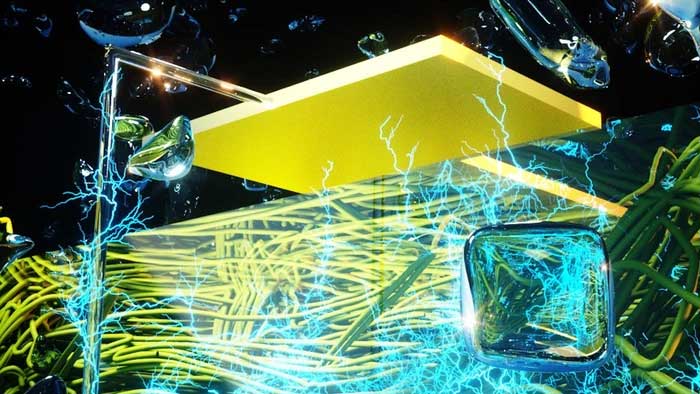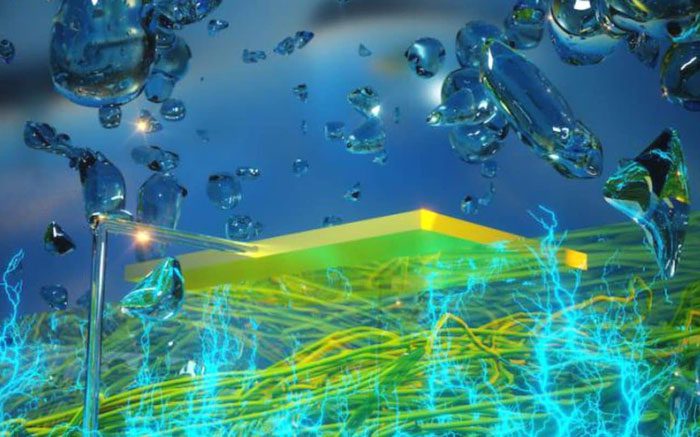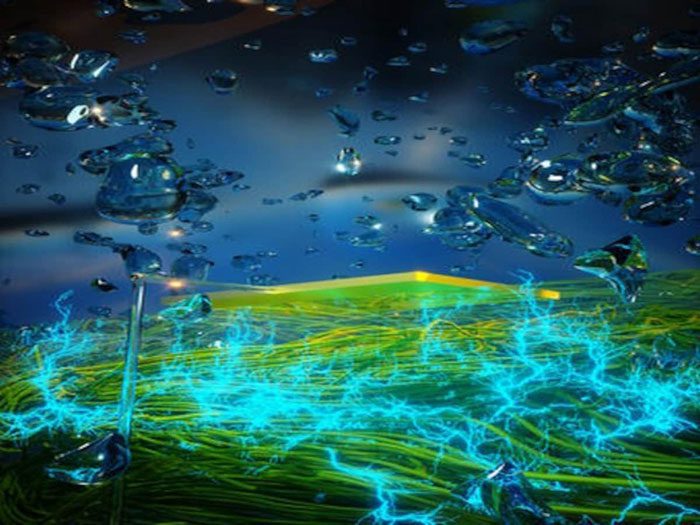This groundbreaking technology, known as the “Air-Gen Effect,” harnesses the moisture present in the atmosphere to generate sustainable energy.
The Air-Gen Effect: Generating Electricity from Atmospheric Moisture
Researchers have long sought innovative ways to harness renewable energy sources. The Air-Gen Effect represents a significant breakthrough in this mission.
Scientists discovered that a thin protein film, referred to as “nano material”, can generate electricity by extracting energy from the water vapor in the air.
This remarkable phenomenon opens up new possibilities for sustainable energy harvesting and has the potential to revolutionize the renewable energy sector.

How the Air-Gen Effect Works: Tiny pores allow water molecules to pass through, generating electricity from the charge accumulation carried by the water molecules, according to a recent article published in the journal Advanced Materials.
The Air-Gen Effect operates on the principle of generating electricity from the naturally occurring water vapor in the atmosphere. The nano material, with its unique properties, acts as a conductor that can extract electrical energy from the surrounding humidity.
When water molecules come into contact with the thin film, they undergo a series of chemical reactions, resulting in the creation of a voltage gradient that generates electricity. This process occurs continuously as long as the material is exposed to humid air, making it a sustainable and promising energy source.

Essentially, the electricity generation process of the Air-Gen Effect mimics how clouds produce electricity, which they release in the form of lightning. Since moisture is always present in the air, the Air-Gen Effect can operate at any time of day, regardless of weather conditions—unlike renewable energy technologies such as wind and solar.
Applications and Significance of the Air-Gen Effect
The discovery of the Air-Gen Effect holds immense potential for renewable energy generation. By utilizing the abundant moisture in the air, this technology provides a clean and renewable energy source that can be utilized globally.
Unlike traditional energy production methods that rely on fossil fuels, contributing to greenhouse gas emissions and environmental degradation, the Air-Gen Effect offers a sustainable solution that could significantly reduce our carbon footprint.

Water molecules can travel about 100 nanometers in the air before colliding with each other. As water moves through the nano material, electrical charge tends to accumulate at the top of the material where they enter. With fewer molecules reaching the lower layer, this creates a charge imbalance similar to phenomena in clouds. Electrodes on both sides of the material then channel the electricity to whatever needs power.
One of the main advantages of the Air-Gen Effect is its ability to address energy poverty in remote and underserved areas. Many regions around the world lack access to a reliable power grid, making it challenging to meet basic needs and support economic development.
The ability to generate electricity from the air provides a decentralized energy solution that can be applied to various communities, improving their quality of life. This technology has the potential to bring electricity to remote villages, healthcare facilities, and educational institutions, opening up new opportunities for progress and development.

Because the nano material is extremely thin, it can be stacked thousands of times and even generate multiple kilowatts of energy. In the future, small-scale Air-Gen devices could power everything from wearable gadgets to devices capable of providing sufficient energy for an entire household.
Challenges and Future Prospects
While the Air-Gen Effect shows great promise, there are challenges that must be overcome before it can be deployed on a large scale. Researchers are currently focusing on optimizing the materials, enhancing energy conversion efficiency, and developing scalable production processes. The commercialization of this technology requires further research, investment, and collaboration between academia, industry, and policymakers.
As with any emerging technology, it is crucial to assess the environmental impact and ensure its long-term sustainability. Although the Air-Gen Effect presents a renewable energy solution, the production and disposal of the nano material need to be evaluated to mitigate any potential adverse environmental impacts. Researchers are actively working to develop sustainable and environmentally friendly materials that could further enhance the viability of this technology.

This innovation has the potential to revolutionize renewable energy.
The discovery of the Air-Gen Effect marks an important milestone in the quest for clean and sustainable energy sources. As researchers continue to refine the technology, we can envision a future where electricity generation from the air becomes a commonplace reality. This innovation has the potential to revolutionize the renewable energy landscape, decreasing reliance on fossil fuels and mitigating the impacts of climate change.
The Air-Gen Effect has captured the attention of the scientific community and holds great promise for the future of energy. By harnessing the moisture present in the atmosphere, this technology provides a sustainable and renewable energy source that can energize communities, improve lives, and minimize the environmental impact of traditional energy generation methods.





















































